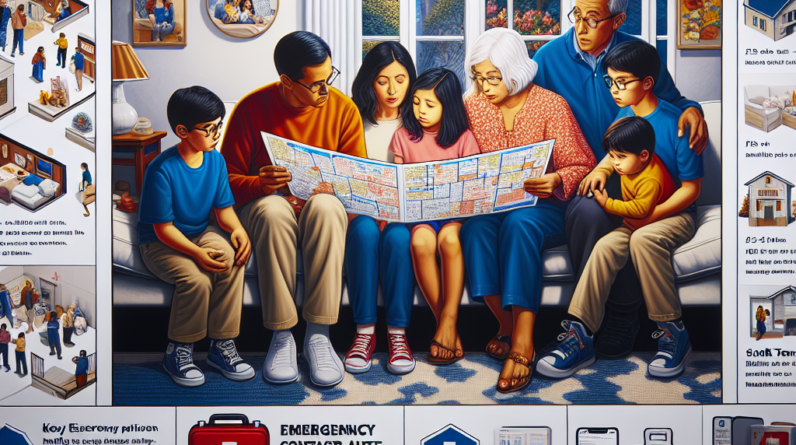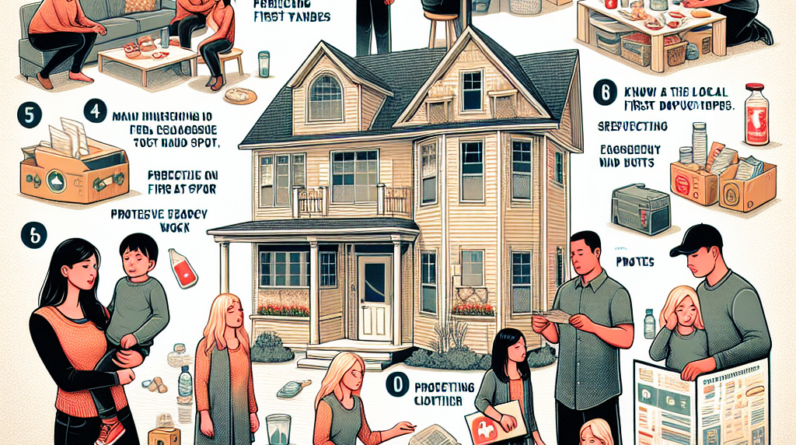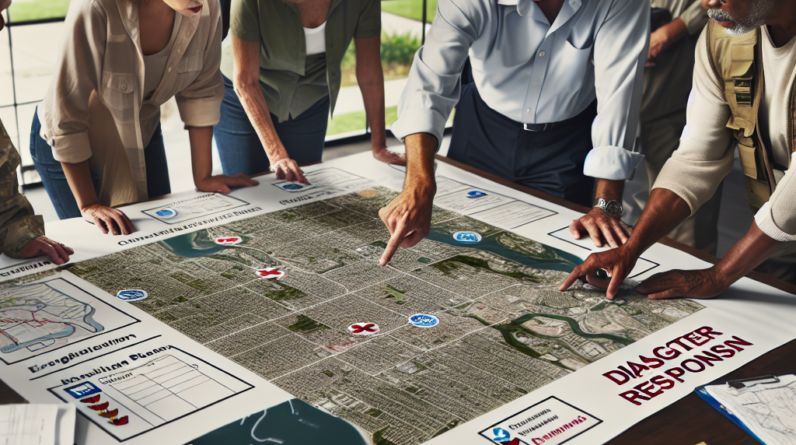
Preparing for emergencies can be a daunting task, especially for larger families with varied needs. This comprehensive guide breaks down the essentials of emergency preparedness into manageable steps, ensuring that all family members, including pets, are taken into account. From communication strategies to regular drills, discover how to create a solid plan that brings peace of mind and fosters family unity in times of crisis.
Understanding Your Family’s Unique Needs
Every family is unique, and this is particularly true for larger households. It’s important to consider not only the number of family members but also their individual ages and specific needs. Start by making a detailed list of each family member, noting any special requirements they might have. For instance, young children may need particular snacks or comfort items like toys, while teenagers might require more independence. Including pets in your emergency plan is also crucial as they are important family members too.
Recognizing these details will help you tailor an effective emergency plan. Understanding each person’s capabilities and needs allows you to assign roles and responsibilities that suit each family member, thereby enhancing the overall effectiveness of your emergency strategy.
Creating a Communication Strategy
In the event of an emergency, clear and reliable communication among family members is vital. Establish a comprehensive communication plan that includes methods for staying in touch and designated meeting spots in case your home is inaccessible. Involve older children in the planning process to empower them and ensure they know what to do.
Implement practical tools like family group chats or an emergency contact list to facilitate communication. It’s also essential to consider different scenarios, such as being at home versus being away, and emphasize the importance of using phones for calls, not just texts, during critical situations. Practicing this plan can make a significant difference in an actual emergency.
Planning for Different Scenarios
Playing the ‘what-if’ game is an excellent way to prepare for potential emergencies. Discuss various scenarios like natural disasters or medical emergencies and brainstorm together on how to respond. For example, know what to do if there’s a power outage or if someone needs first aid.
Using personal experiences with past emergencies can also help make the planning more realistic and relatable. This approach not only prepares everyone but also helps lessons stick more effectively.
Essential Emergency Supplies
# Inventorying and Stocking Supplies
Begin by compiling a comprehensive list of necessary supplies for different emergencies. Engage the whole family in this activity to make it fun and informative. Once you have your list, store these items in a designated, easily accessible area.
Regularly check and rotate your supplies to ensure they are up to date and usable. Integrating this into a monthly family activity can enhance preparedness and help maintain organization.
# Food and Water Needs
When stocking emergency supplies, prioritize food and water. Choose items that cater to the dietary preferences and restrictions of your family members to ensure everyone has something they can eat, even in an emergency.
Ensure you have at least one gallon of water per person per day for at least three days. Include a variety of foods, such as shelf-stable items and snacks that are particularly kid-friendly to prevent stress and discomfort during emergencies.
# Managing Medication and Health Needs
If anyone in your family requires regular medication, keep a detailed and updated list of these medications, along with instructions and dosages. Prepare a separate, easily accessible kit for quick evacuation if necessary.
Also, stock up on basic first aid supplies and consider any special health needs, such as gluten-free foods or baby formula. Making comprehensive health preparations ensures everyone’s safety and well-being during emergencies.
Training and Practice Drills
# Conducting Family Drills
Regular practice of your emergency plans through family drills is essential. Simulate different emergency scenarios to help reduce anxiety and improve response times during real situations. Involving children in these drills teaches them important skills and helps build their confidence.
Keep drills light-hearted and fun, treat them as learning adventures, and use these opportunities to strengthen family bonds and create lasting memories around the importance of safety.
Maintaining Your Emergency Plans Regularly
# Regular Reviews and Updates
Emergency plans should be dynamic and adaptable to changes within your family. Hold regular reviews to update any necessary changes and refresh everyone’s memory of the plan. Utilizing family meetings for these reviews can reinforce teamwork and ensure everyone stays informed and prepared.
# Tracking Supplies and Inventory Updates
Maintain a simple system, like a checklist or a family whiteboard, to track your emergency supplies. Regular check-ins, especially seasonally, can help keep your inventory relevant and ready for any situation. Keeping everything organized minimizes last-minute scrambles during emergencies.
# Encouraging Family Involvement in Preparedness
Foster a sense of responsibility and teamwork by involving all family members in emergency planning and preparedness activities. This not only enhances readiness but also strengthens familial ties, making the entire process more effective and supportive.
Frequently Asked Questions
# 1. What should be included in an emergency kit for a large family?
Your emergency kit should encompass essentials like water, non-perishable food, first aid supplies, medications, comforting items for children, and practical tools such as flashlights, batteries, and a multi-tool.
# 2. How often should we practice our emergency plans?
It is advisable to conduct practice drills every few months to keep everyone’s knowledge fresh and ensure all family members remember their roles during an emergency.
# 3. How can I ensure my kids are prepared for emergencies?
Actively involve them in the planning process, teach them basic survival and safety skills, and ensure each drill is engaging and informative. The more they understand and participate, the more confident they will feel.
# 4. How can I help my family deal with the emotional aspects of emergencies?
Openly discuss potential fears and anxieties associated with emergencies. Provide comfort items and encourage sharing of feelings to build a supportive environment that acknowledges and addresses emotional needs.
# 5. Where should I store emergency supplies?
Store your emergency supplies in a central, easily accessible location known to all family members, such as a closet, basement, or under a bed, to ensure quick access when needed.


